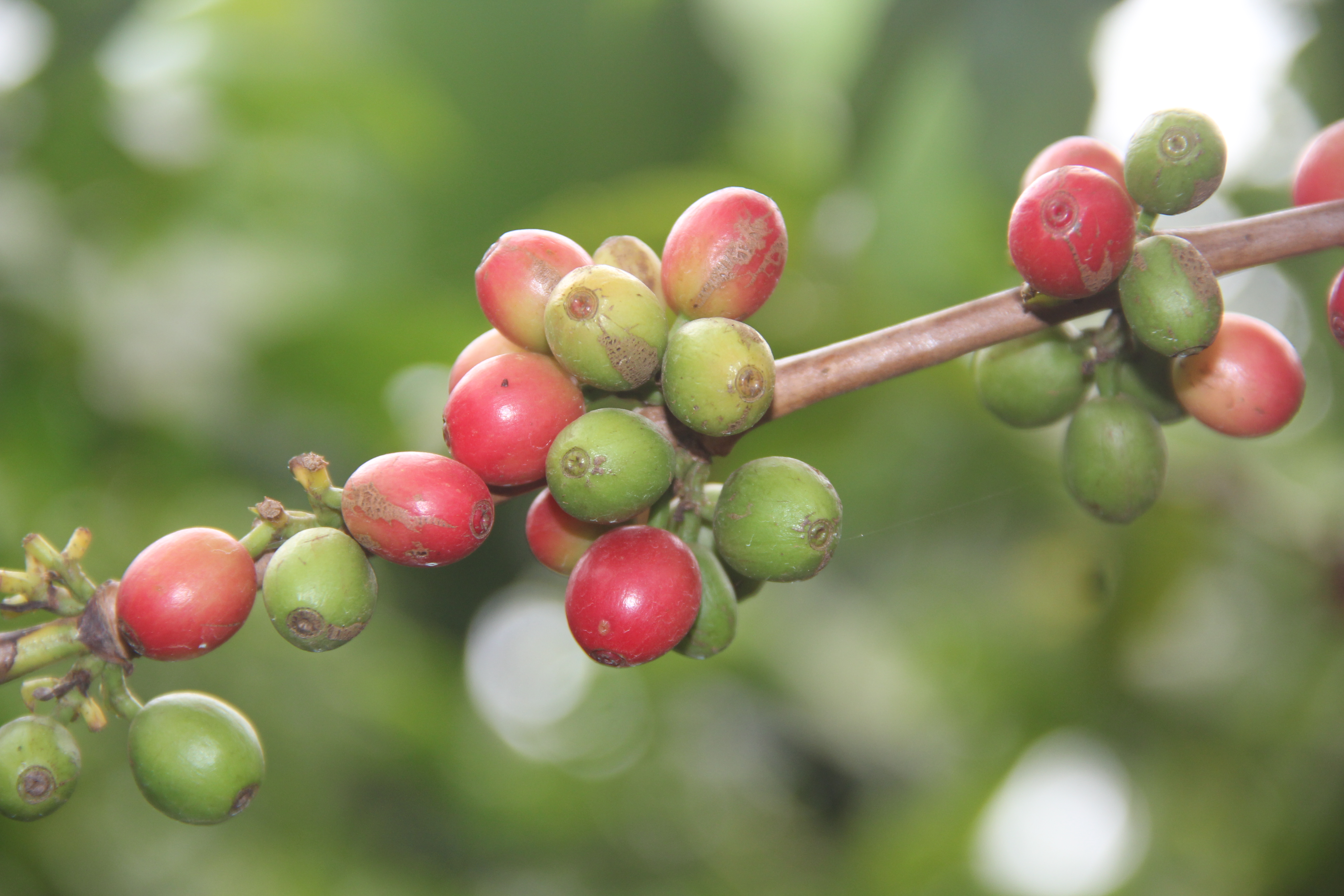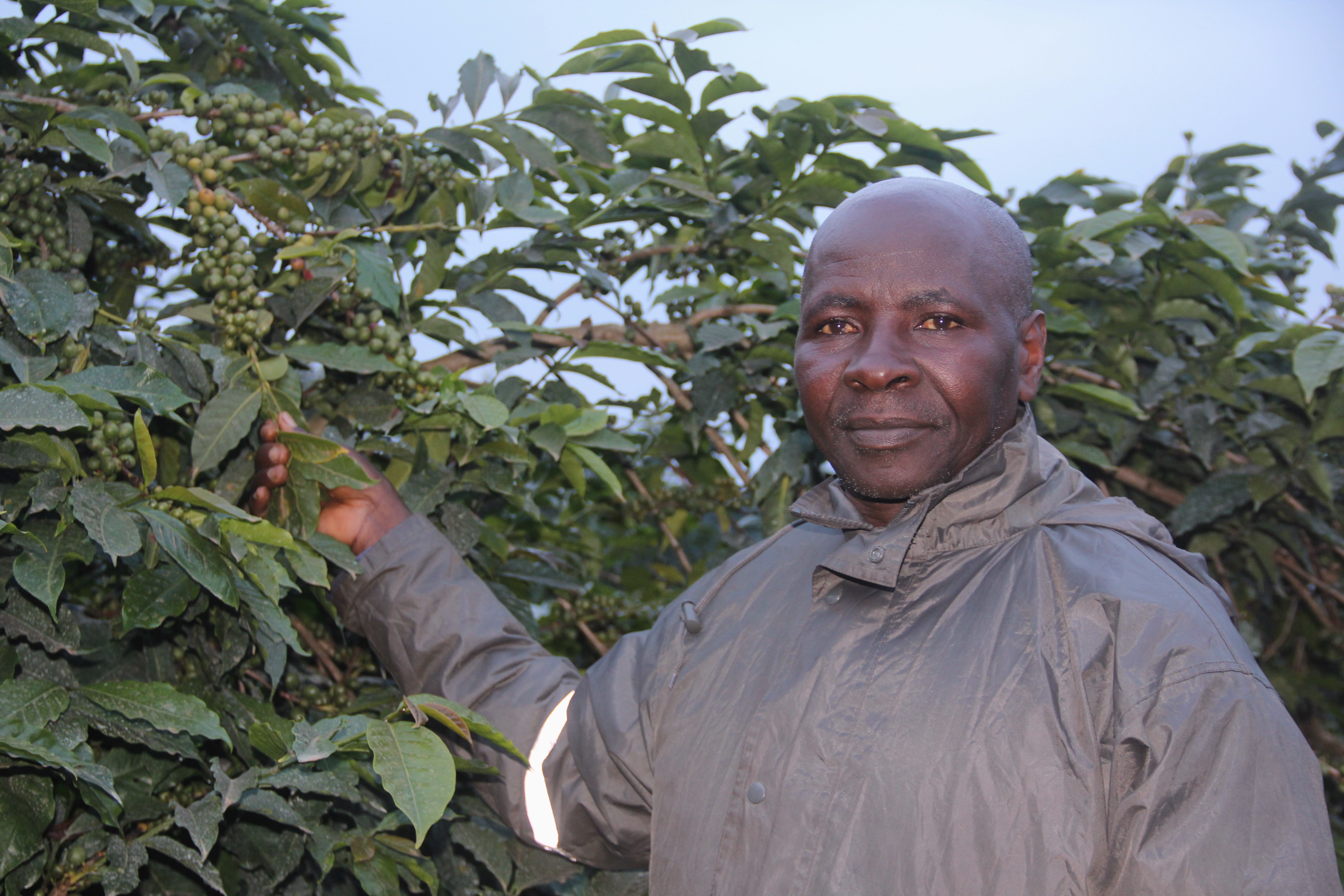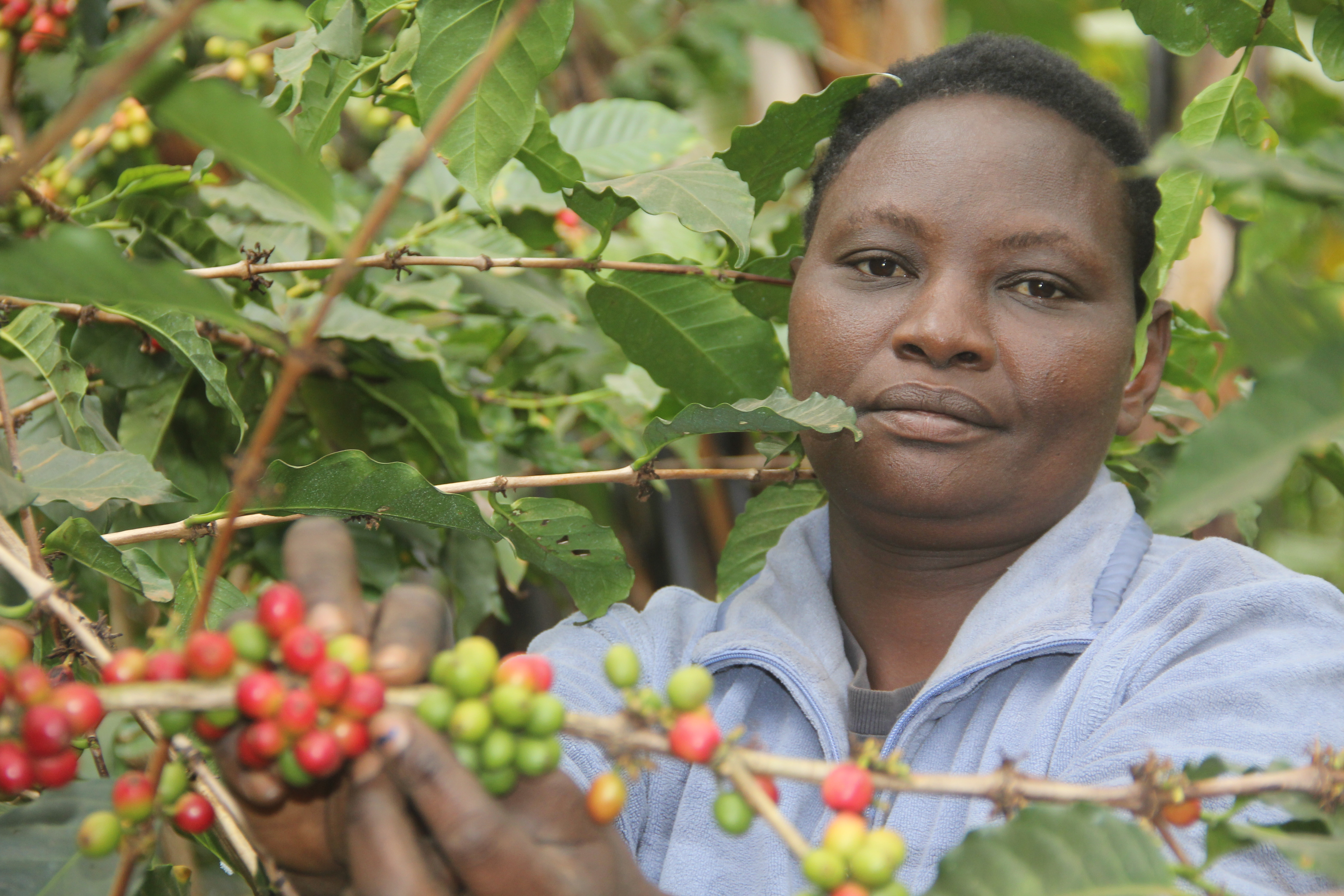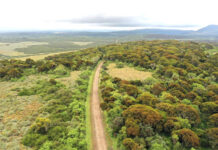By Clifford Akumu
Many coffee farmers from Othaya, Nyeri County have lately not had a chance to enjoy a bumper harvest. Devastating effects of climate change and numerous diseases have made many farmers spend sleepless nights.
Although Thuti village is awash with lush and green coffee plantations, the story of coffee farmers abandoning the crop due to the vagaries of weather is no news is this village.
Coffee farmers, just like Joseph Maina Ngumo who inherited coffee trees from his parents in 1996 clearly know well what it means when the weather changes.
“I have not been getting enough yield from my coffee field .” Says Ngumo, 47.

Ngumo used to harvest about 500kgs of coffee berries from 100 stems on a 0.7 acres piece of land.
“I used to earn on average of 40, 000 Ksh per year. But it would vary depending on the price set by the cooperative society that bought my coffee .” Ngumo reveals.
It was until March 2016 that farmers like Ngumo smelt the aroma of the new technology that was being promoted by Farm Input Promotions-Africa (FIPS-Africa)
According to Ngumo, whose plot of land serves as demonstration site, the introduction of organic fertilizers and lime in their coffee farms will help reduce poverty in the county.
“The project has really helped coffee farmers from Othaya. We use Mavuno fertilizers and spray our coffee plants with Natifo and Thunder fertilizers .” Says Ngumo who is also the village based advisor for Thuti farmers.
The project uses around fifty trees per farmer in the region for ‘baby demonstrations’. The plots have been divided into various portions; for example some plots have lime alone, Mavuno and lime and, other fertilizers and lime.
“If you compare the plots with organic fertilizer with the one we used to apply earlier, there is a lot of difference because the coffee berries are greener .”

The Village Based Advisors (VBAs) grows the KSCL coffee variety but what most farmers in the area grow is the Batian variety that does not require more chemical spraying.
Even though we have not harvested, says Ngumo, the prospects of a bumper harvest from this year’s coffee season is promising.
Peter Kamami Kariuki, 50, whose quarter of an acre coffee farm is a beneficiary of the technology is gearing up for an increase in production.
Mr. Kariuki used to get about 500 ksh from his coffee farm.
The former photographer who left the city in 2013 to start coffee farming with 100 trees is optimistic too.
“Last year I only got 8kgs.But with this new initiative, I am sure of about 10kg.” adds Kariuki.
Spraying coffee plants to prevent diseases is major challenge facing coffee farmers thanks to skyrocketing cost of pesticides.
However, FIPS-Africa in conjunction with the VBA’s have constantly trained coffee farmers in Thuti village and its environs on when to spray their plants.
“We have been trained on which foliar to spray during which month in the coffee production period. The even give us timetable on how to spray the chemicals.” said Kariuki.
Getting seedlings for coffee farmers in this part of Nyeri County has been smooth thanks to a nursery at Gura run by Othaya Cooperative Society.

Othaya Cooperative Society, the umbrella body for coffee farmers in the area have a suitable package for its farmers.
For those with cash, they can access the seedlings at 20 ksh per tree.
“But if you cannot afford the money, they provide the seedlings as a loan and then deduct while paying farmers during harvesting period.”
To grow coffee, advices Ngumo, Firstly, start by digging holes in your plot of land. This is then followed by mixing manure and fertilizer with the soil and leaves it for one month.
At the fourth month when the rains come, continues Ngumo, one picks the seedlings from a nursery to plant.
According to the VBA, there is still work to be done so that all the villages in the entire county can access these life-changing farming technologies.
“I currently serve four villages but I hope the organization can facilitate every village to have at least one plot for demonstration on any technology” notes Ngumo.
Eric Guantai, network coordinator with the organization reckons that proper training have helped farmers, especially coffee farmers, on how to increase yields.
“It feels good as network coordinator to see many farmers changing their way of thinking and start treating agriculture as a full time employer.” says Guantai.
Most farmers like Kariuki are now able to avoid counterfeit seeds that flood the market.“I am able to order the right seed variety .” concludes Kariuki.













